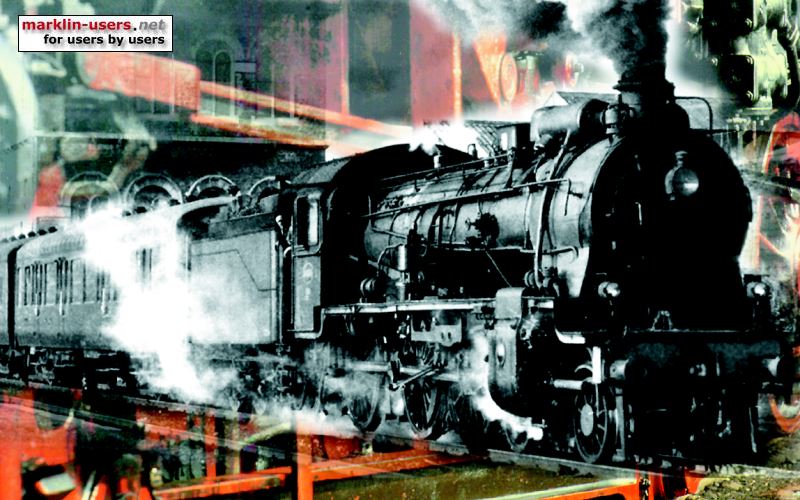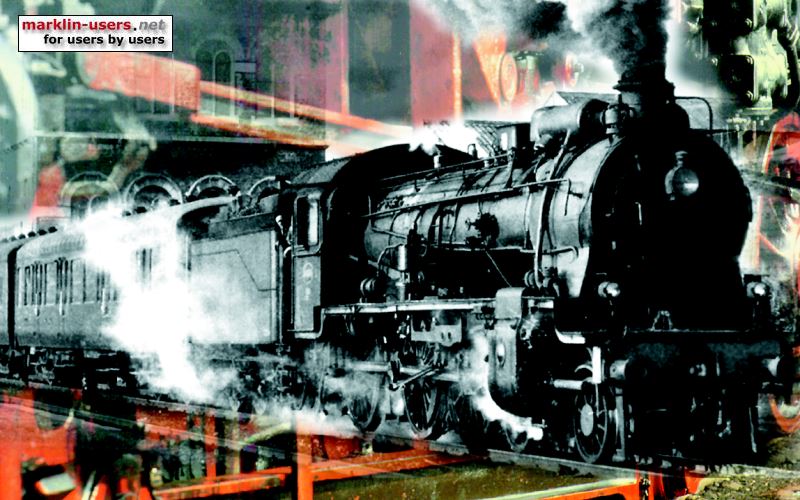 Joined: 05/07/2020(UTC) Posts: 326 Location: Mississippi, Vancleave
|
Can you explain how a 3 cylinder steam locomotive works? I don't understand how the valves open/close with each stroke. I can understand the stroke cycle of a 2 cylinder engine, but not a 3 cylinder.
|
|
|
|
|
|
 Joined: 19/05/2014(UTC) Posts: 64 Location: Sjælland, Kirke-Hyllinge
|
A steam locomotive with more than two cylinders have one or two cylinders in the middle of the frame and pointing forward and can be seen below the boiler at the front of the locomotive. The extra cylinders are normally high pressure cylinders and the valves are working independent of the two cylinders outside of the frame.
|
 1 user liked this useful post by PerR
|
|
|
|
Joined: 16/02/2004(UTC)
Posts: 15,452
Location: DE-NW
|
Originally Posted by: Mr. Ron  I can understand the stroke cycle of a 2 cylinder engine, but not a 3 cylinder. With 2 cylinders, there is an angle of 90° between the rods and there are four chuffs per revolution, two from each cylinder (unless it is a compound engine). With 3 cylinders, the angle is 120° and there are six chuffs per revolution, two from each cylinder. Cylinders work just the same. |
Regards Tom --- "In all of the gauges, we particularly emphasize a high level of quality, the best possible fidelity to the prototype, and absolute precision. You will see that in all of our products." (from Märklin New Items Brochure 2015, page 1) ROFLBTCUTS  |
 2 users liked this useful post by H0
|
|
|
|
 Joined: 09/08/2008(UTC) Posts: 1,931 Location: Auckland,
|
Originally Posted by: H0  Originally Posted by: Mr. Ron  I can understand the stroke cycle of a 2 cylinder engine, but not a 3 cylinder. With 2 cylinders, there is an angle of 90° between the rods and there are four chuffs per revolution, two from each cylinder (unless it is a compound engine). With 3 cylinders, the angle is 120° and there are six chuffs per revolution, two from each cylinder. Cylinders work just the same. Are you sure about the angles??
|
|
|
|
|
|
Joined: 16/02/2004(UTC)
Posts: 15,452
Location: DE-NW
|
Originally Posted by: mvd71  Are you sure about the angles?? Those are the most common angles, but their may be others. Angles are different for three-cylinder compound engines, but there are not many classes of that type. I think this picture shows it quite well (BR 44):  |
Regards Tom --- "In all of the gauges, we particularly emphasize a high level of quality, the best possible fidelity to the prototype, and absolute precision. You will see that in all of our products." (from Märklin New Items Brochure 2015, page 1) ROFLBTCUTS  |
 2 users liked this useful post by H0
|
|
|
|
 Joined: 09/08/2008(UTC) Posts: 1,931 Location: Auckland,
|
Ok, perhaps the description is not entirely clear. A two cylinder loco has the pin on the driving wheels offset by 90/270 degrees which gives a power stroke from the cylinder every 90 degrees (because they are double acting.
The three cylinder loco has an even spaced 120 degrees giving a power stroke every 60 degrees.
At least that’s what my brain is thinking when fueled by only one coffee!
|
 1 user liked this useful post by mvd71
|
|
|
|
Forum Jump
You cannot post new topics in this forum.
You cannot reply to topics in this forum.
You cannot delete your posts in this forum.
You cannot edit your posts in this forum.
You cannot create polls in this forum.
You cannot vote in polls in this forum.